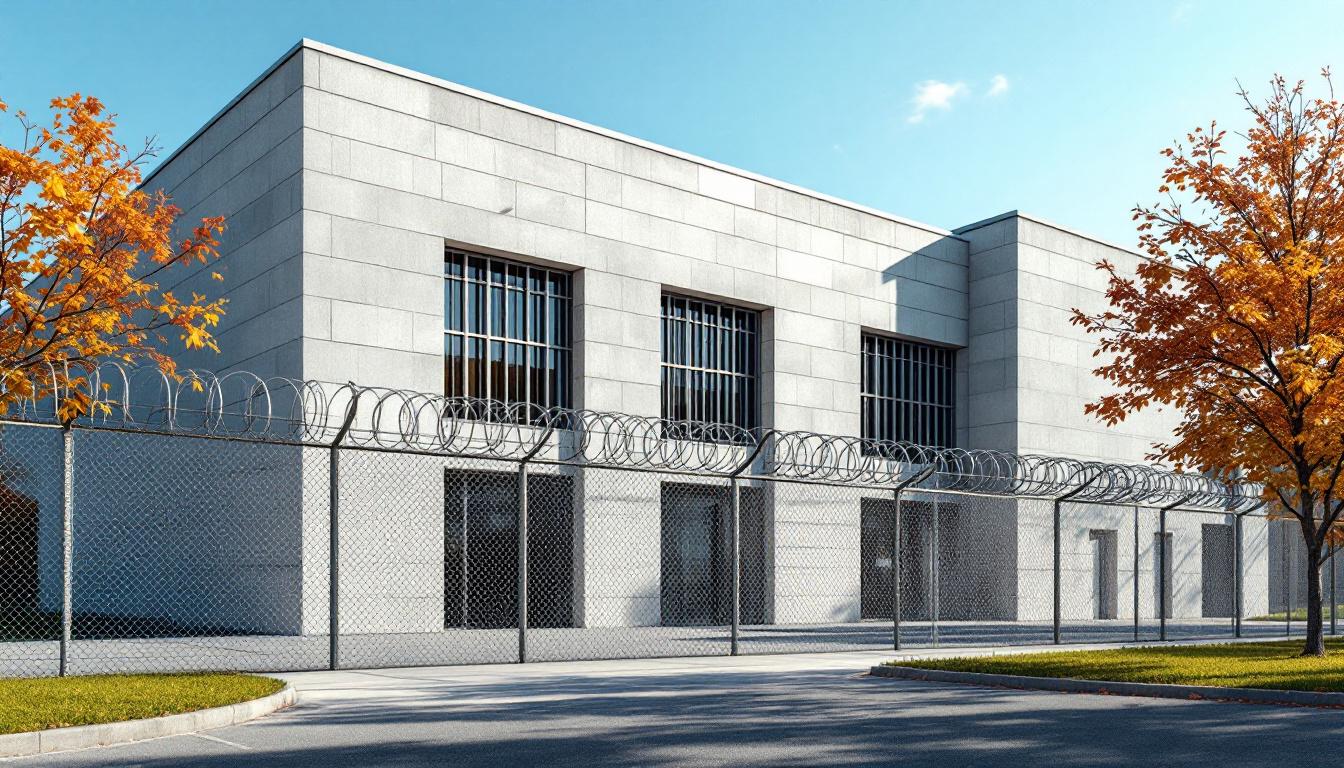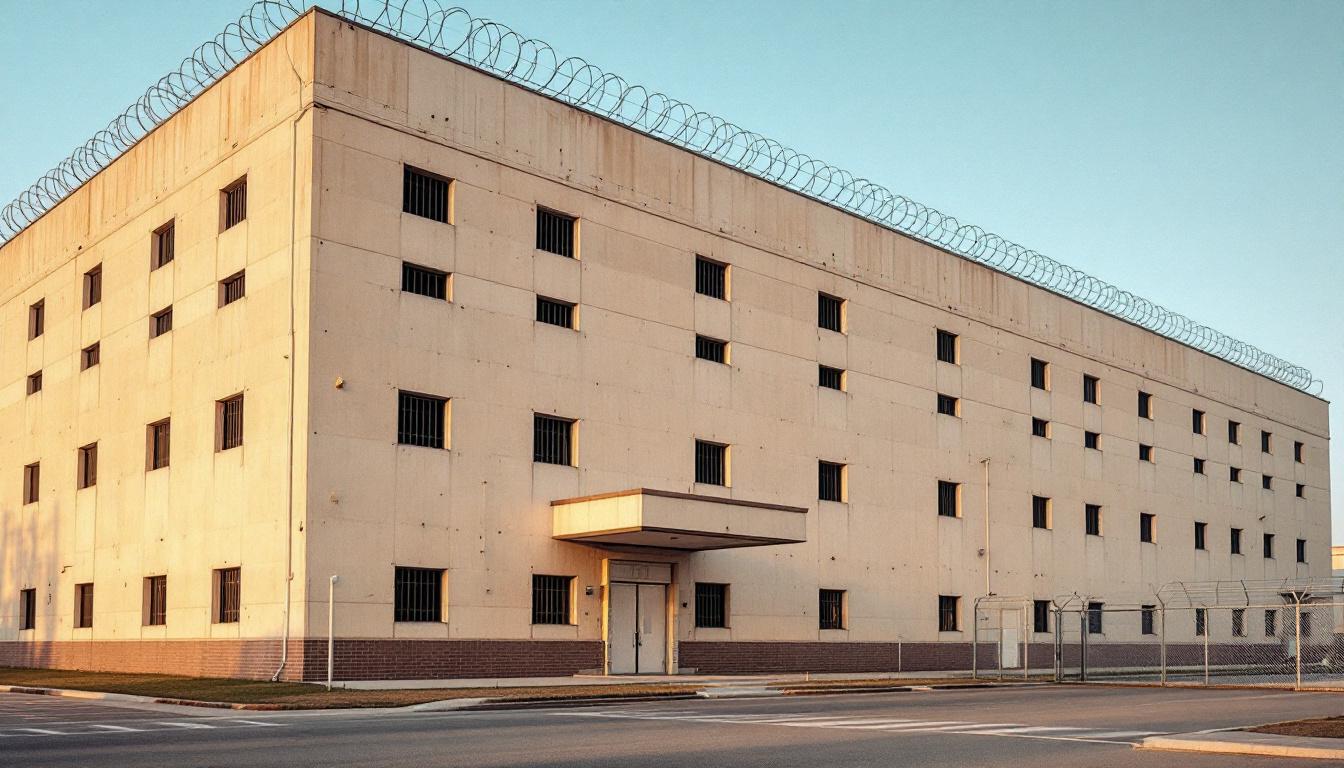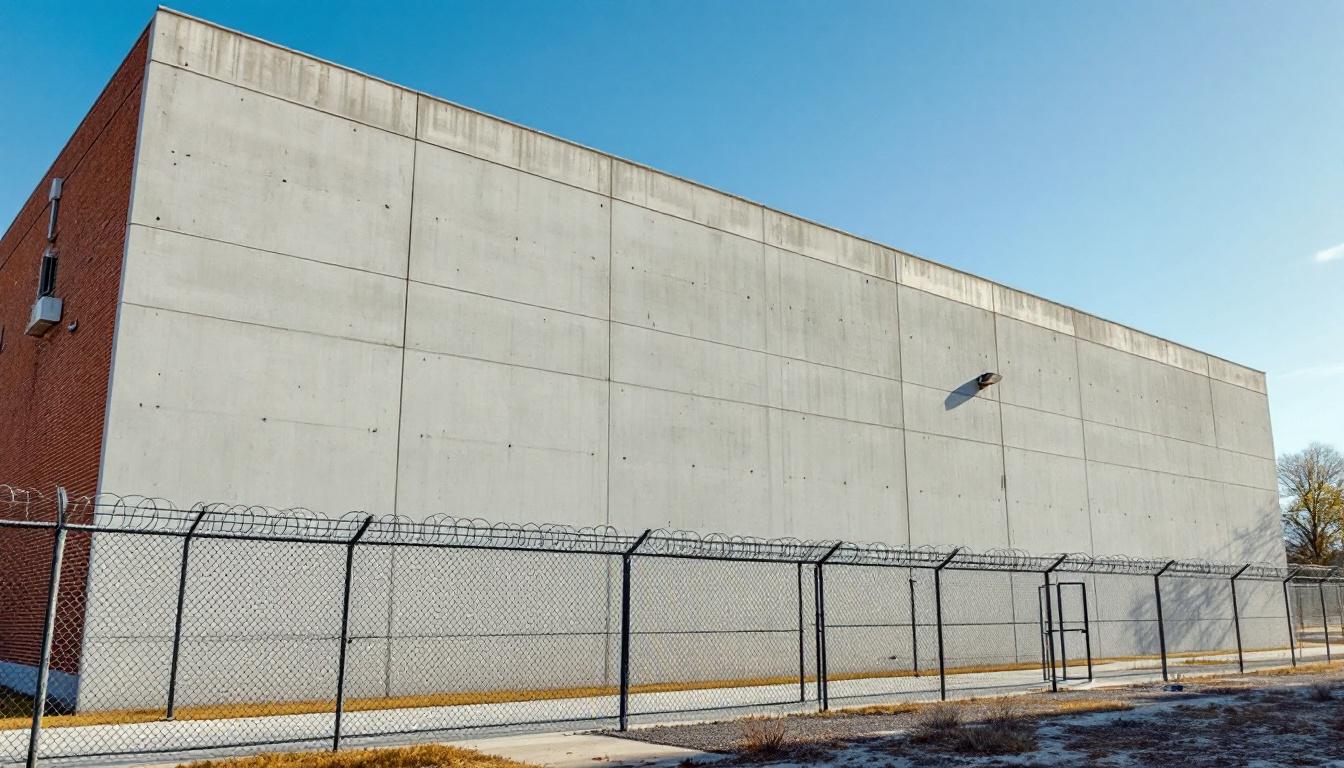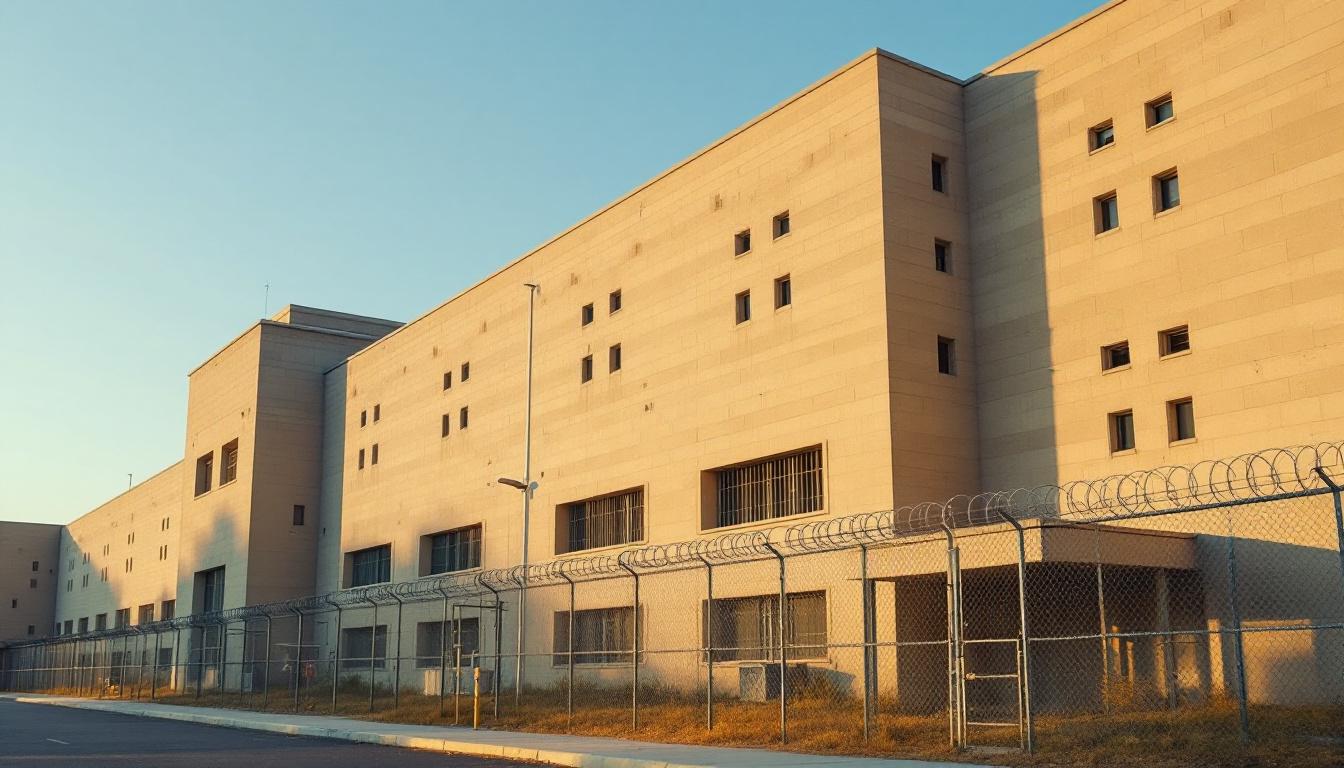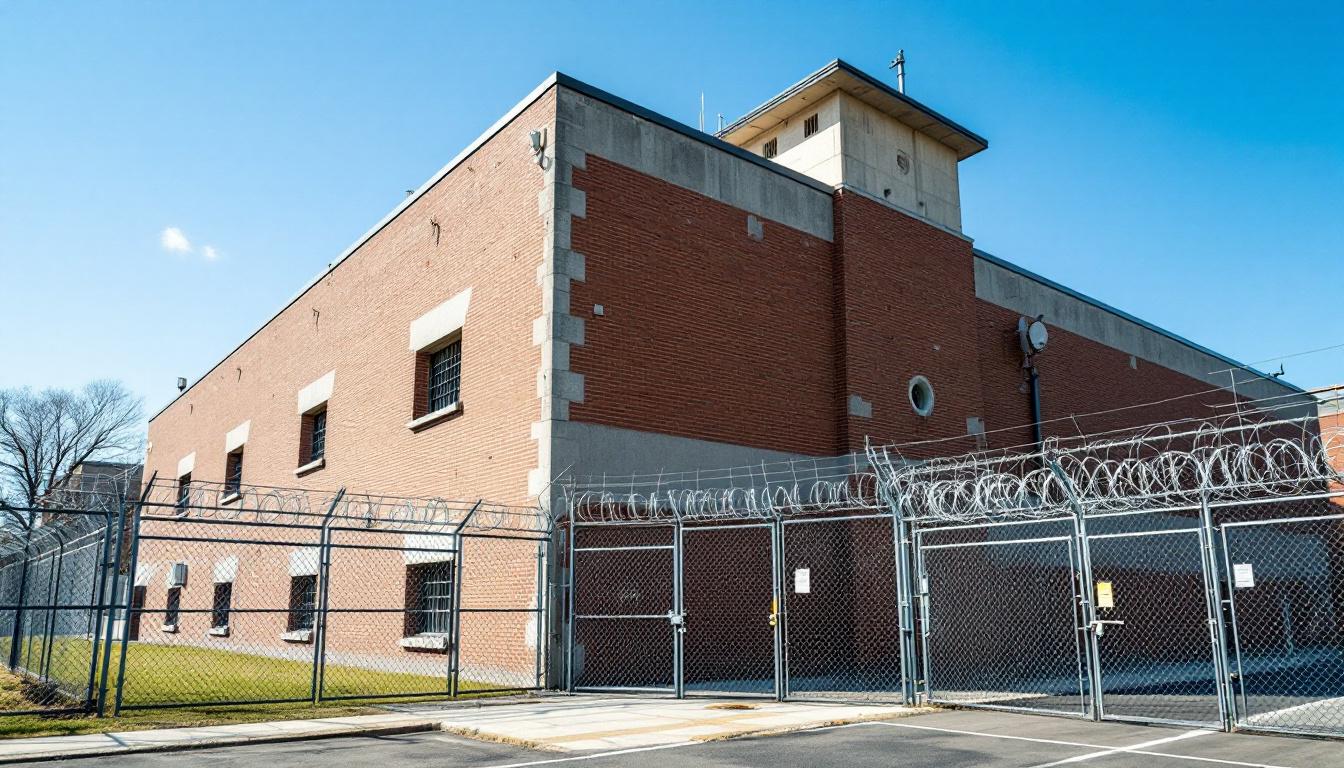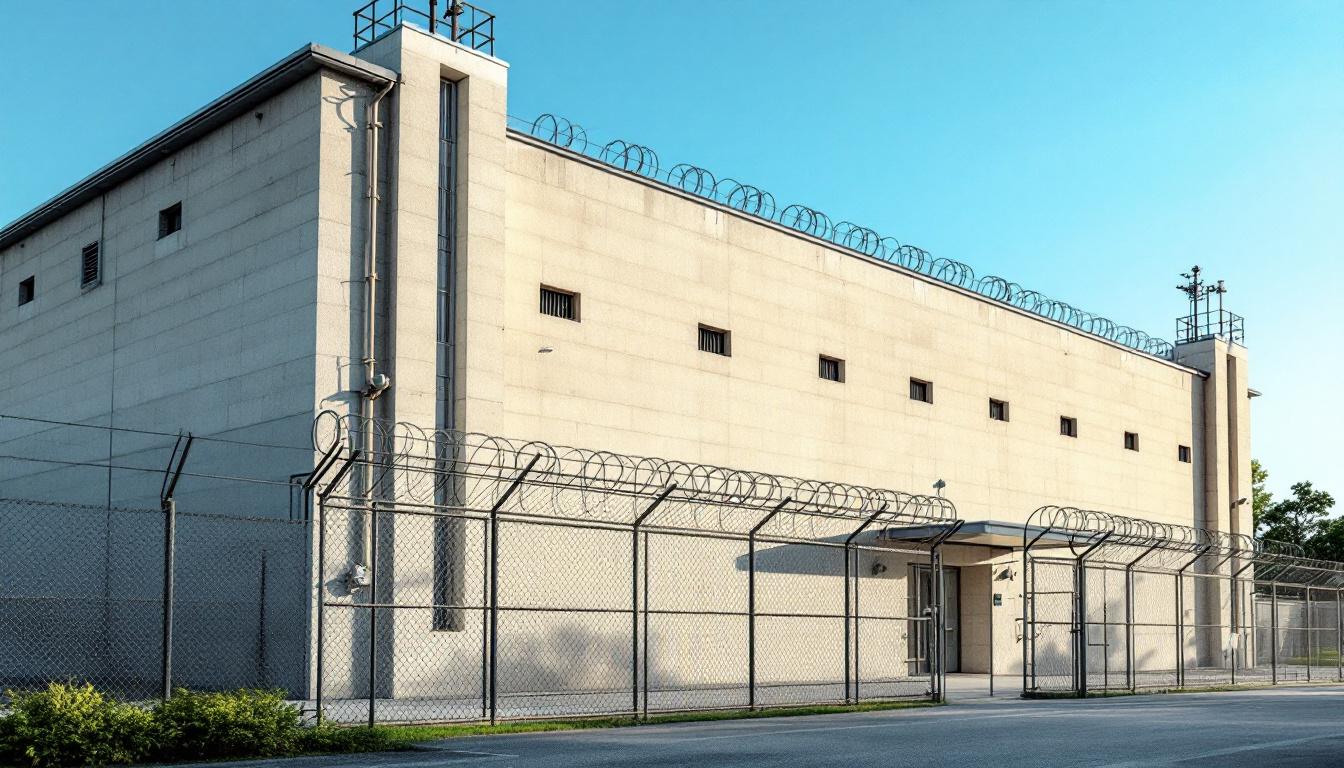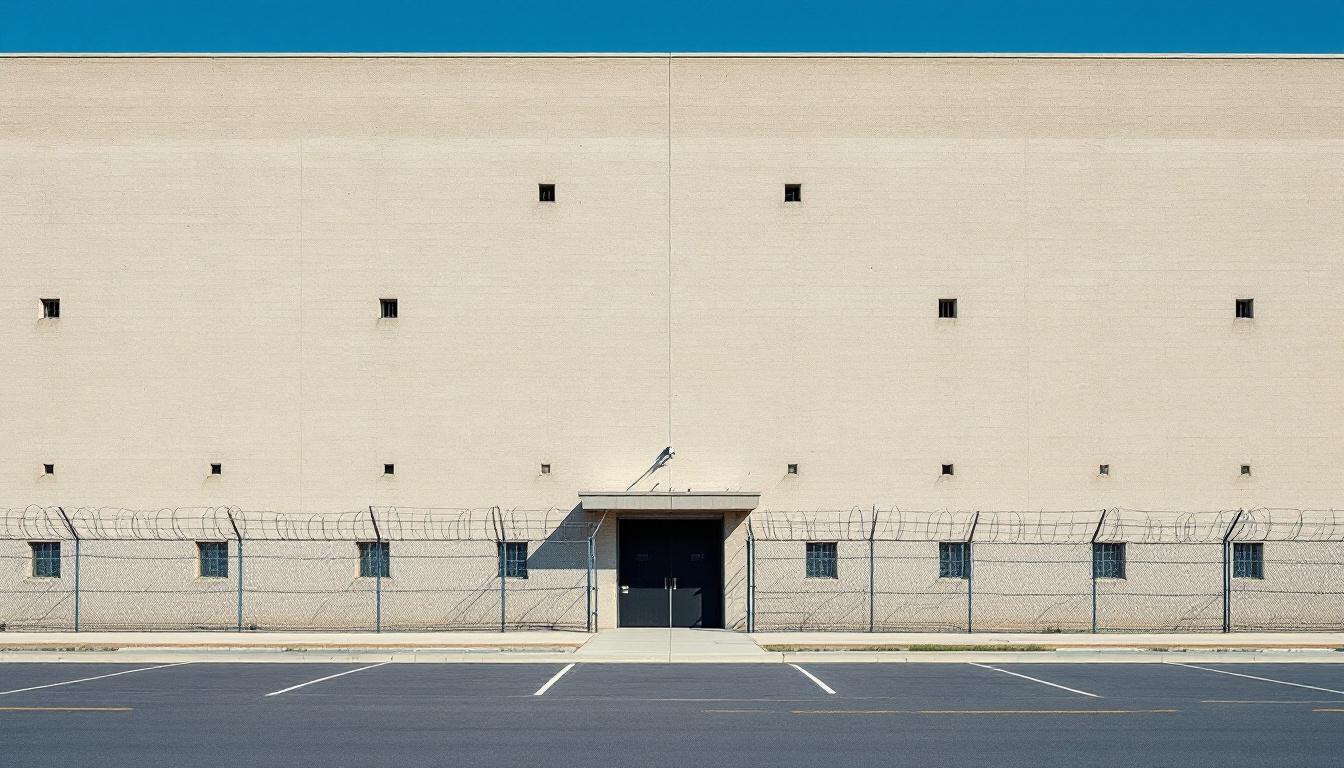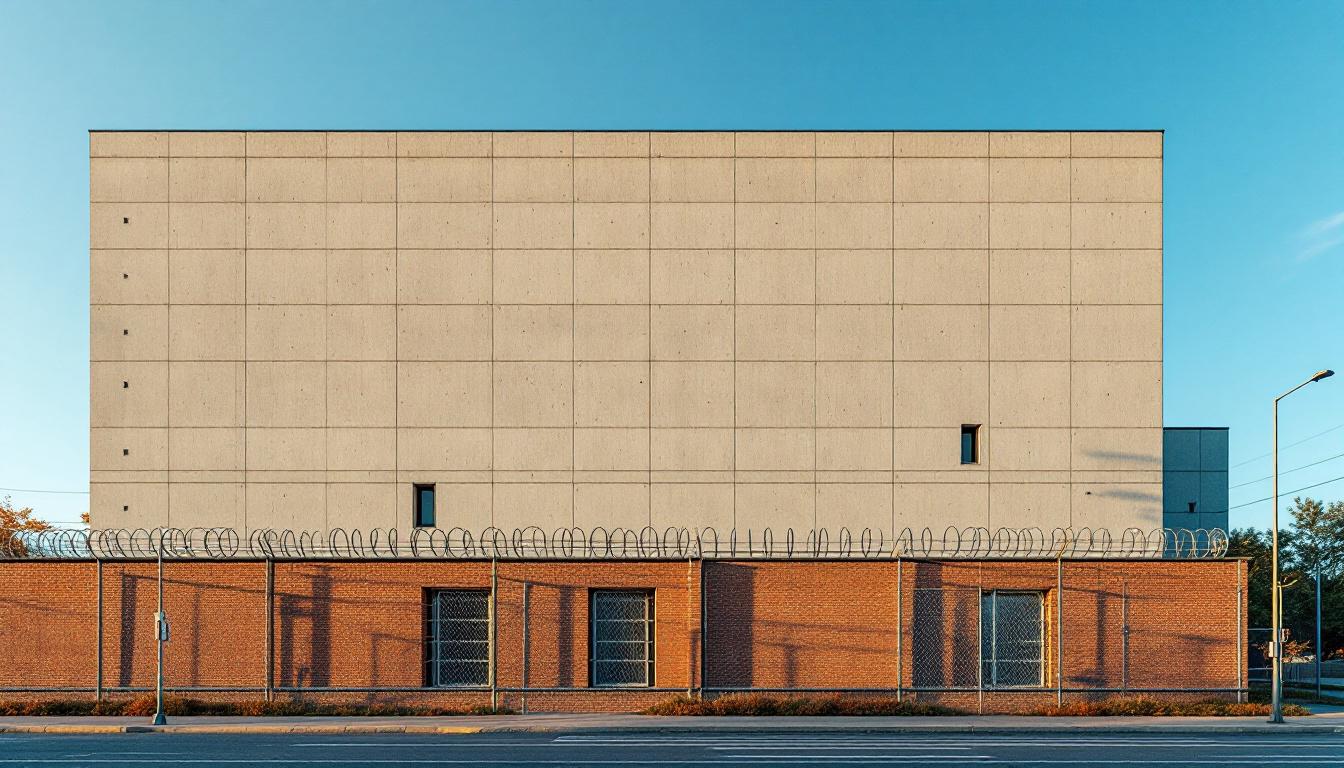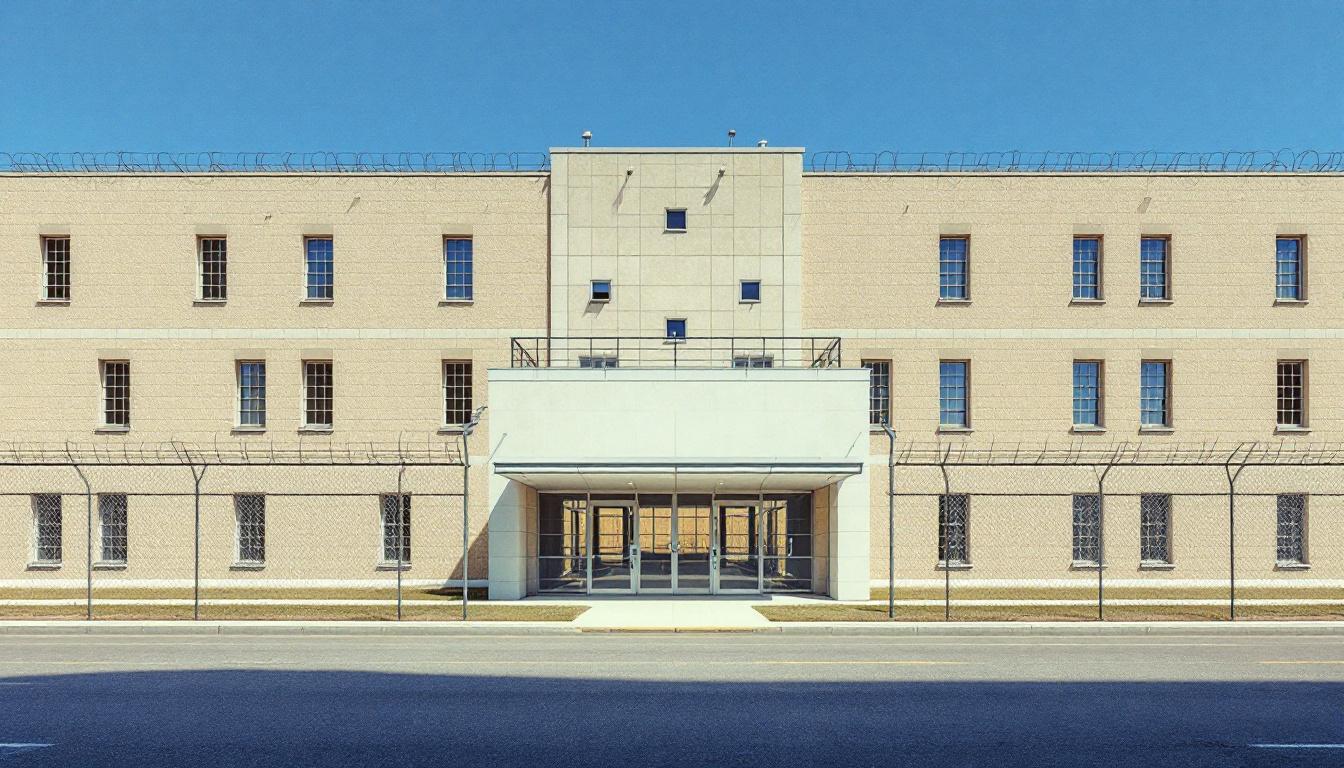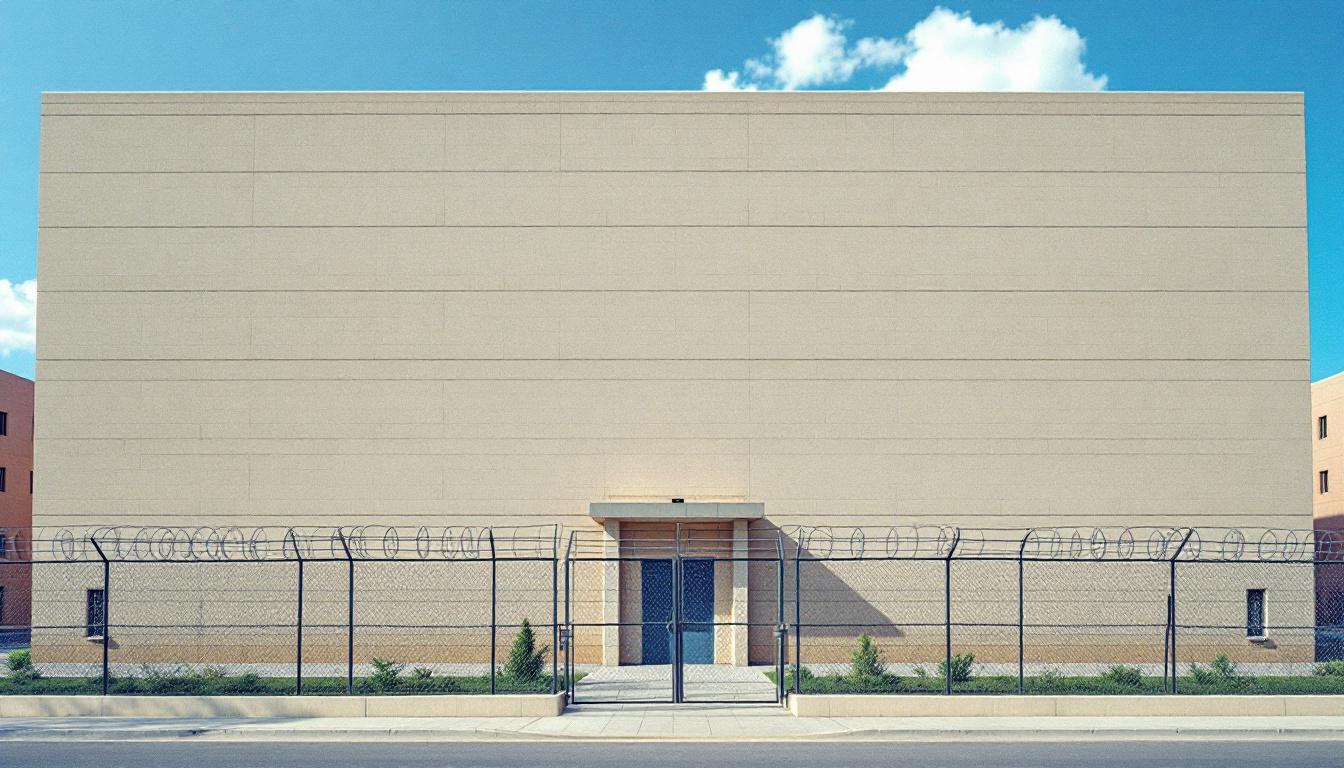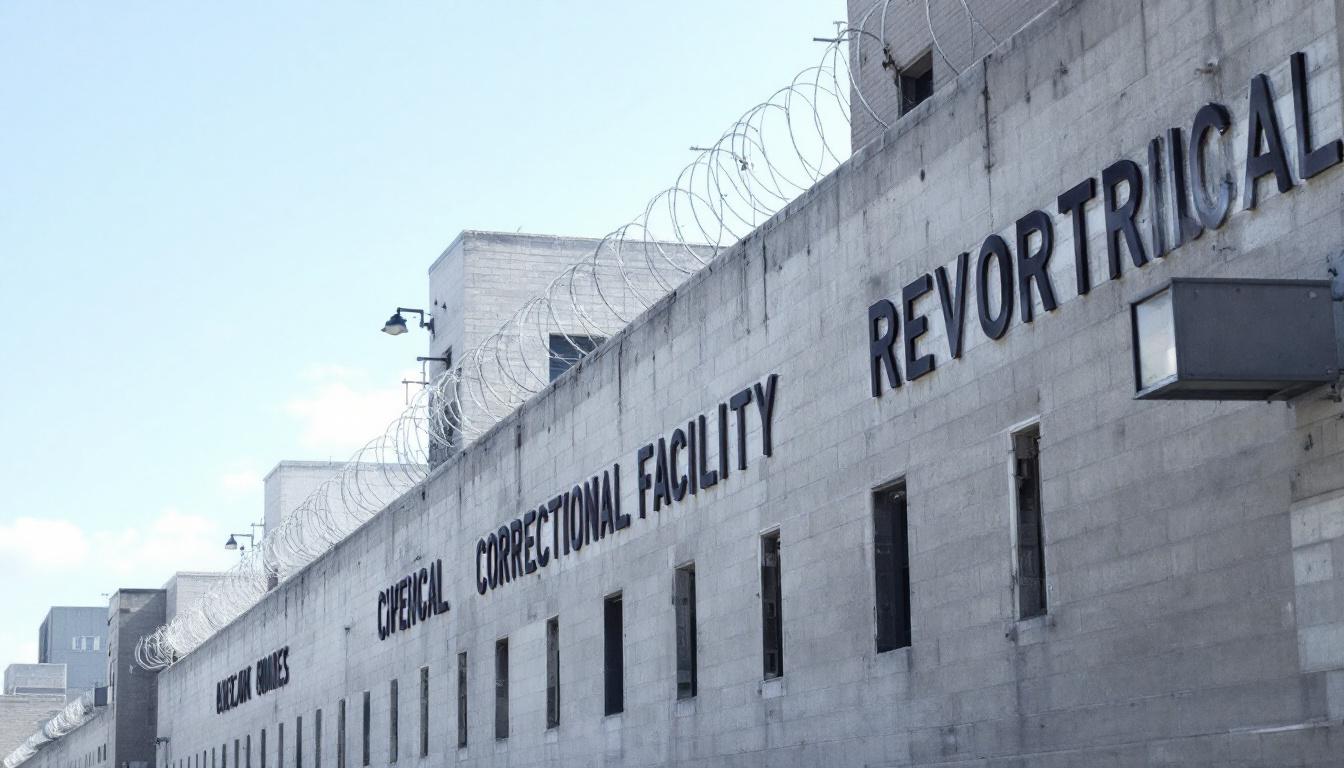
Quick Navigation
How to contact an inmate at St. Lucie County Jail
This comprehensive guide will walk you through how to connect with an inmate at St. Lucie County Jail. Follow the steps below to find an inmate and send letters and photos:
- Search for the inmate using our search tool below
- Create your account or log in to Penmate
- Write your message (up to 6,000 characters)
- Send instantly - inmates receive printed copies daily
Find an Inmate
Search for an inmate to start communicating today
Tip: You can search by first name, last name, or inmate ID number
To contact a person at St. Lucie County Jail start by searching for the person on the official facility website. Perform a search by following these steps:
- Step 1: Enter their first name and last name into the search form and click "Search"
- Step 2: Locate their inmate record
- Step 3: Write down their Inmate ID and any housing information provided
Important! Be sure to enter the person's full name. Nicknames should not be used.
How to Send Messages to Inmates

You can use your phone or computer to send emails, letters, and photos to an inmate. Messages are sent electronically to inmate tablets or kiosks at the facility. If you would like to send a message, start by searching for an inmate at St. Lucie County Jail.
Sending Photos and Postcards

A great way to send love and support to a loved one at St. Lucie County Jail is to send photos and postcards. It only takes a few minutes to send photos from your phone and it makes a huge difference. You can also mail postcards with words of support and inspiration, or design your own postcard for special moments like birthdays and holidays.
Important! Be sure not to send any explicit photos or they may not be approved by the facility. You can also use a photo printing app like Penmate to make sure your photos are printed at the correct size (4x6 or 3x5) and are mailed according to the rules and regulations of St. Lucie County Jail.
Frequently asked questions about St. Lucie County Jail
-
How long does it take to deliver a message?
If you're sending an email message your letter is usually delivered within 24-48 hours. For messages sent via mail you should expect delivery within 3-7 days. All messages will need be approved by St. Lucie County Jail.
-
How much does it cost to send a message to St. Lucie County Jail?
You can send a message free using your phone or mail a message via USPS for the price of a $0.60 stamp and envelope. You can also purchase credits or e-stamps from services starting at $1.99.
-
What services can I use to contact an inmate at St. Lucie County Jail?
Penmate
You can use Penmate to send letters and photos to an inmate from your phone. It's an easy way to stay in touch during your loved one's incarceration. Use the inmate locator to find an inmate's location and contact information, then you can send messages within a few minutes.
Securus messaging
Securus may be another option for communicating with an inmate at St. Lucie County Jail. You can create a friends and family account and purchase credits to send messages. All messages will be reviewed and must be approved by the facility.
JPay
Some county jails and state prisons may support sending messages with JPay. You must register an account with the system, find your loved one, and purchase stamps to send messages. For some locations you can also attach photos.
Smart Jail Mail
You may also check if Smart Jail Mail is available at St. Lucie County Jail. Smart Jail Mail is operated by Smart Communications and has contracted with some state and county jails. After purchasing credits, your messages and photos are sent to the facility, printed out, and then handed out to your loved one.
-
What is the mailing address of St. Lucie County Jail?
Mailing address:
St. Lucie County Jail
900 N Rock Rd
Fort Pierce, FL 34945
Phone: (772) 462-7300Business hours:
- Monday: Open 24 hours
- Tuesday: Open 24 hours
- Wednesday: Open 24 hours
- Thursday: Open 24 hours
- Friday: Open 24 hours
- Saturday: Open 24 hours
- Sunday: Open 24 hours
-
What are the visiting hours at St. Lucie County Jail?
Visiting hours at St. Lucie County Jail vary by housing unit and security level. Generally, visits are scheduled on weekends and holidays, with some facilities offering weekday visits. Contact the facility directly at (772) 462-7300 or check their website for the current visiting schedule. Visits typically last 30-60 minutes and must be scheduled in advance.
-
What items are prohibited when sending mail to St. Lucie County Jail?
Prohibited items typically include: cash, personal checks, stamps, stickers, glitter, glue, tape, staples, paperclips, polaroid photos, musical or blank greeting cards, hardcover books, magazines with staples, and any items containing metal or electronics. Only send letters on plain white paper with blue or black ink. Photos must be printed on regular photo paper (no Polaroids). Always check with St. Lucie County Jail for their specific mail policies.
-
How do I send money to an inmate at St. Lucie County Jail?
You can send money to an inmate at St. Lucie County Jail through several methods: 1) Online using JPay, Access Corrections, or the facility's approved vendor, 2) Money orders mailed directly to the facility with the inmate's name and ID number, 3) Kiosks located in the facility lobby, or 4) Over the phone using a credit or debit card. Fees vary by method, typically ranging from $2.95 to $11.95 per transaction.
-
Can I schedule a video visit with an inmate at St. Lucie County Jail?
Many facilities now offer video visitation as an alternative to in-person visits. At St. Lucie County Jail, video visits may be available through services like Penmate, Securus Video Connect, GTL, or ICSolutions. Video visits typically cost $10-20 for 20-30 minutes and must be scheduled in advance. You'll need a computer or smartphone with a camera and reliable internet connection. Contact the facility for their specific video visitation policies and approved vendors.
-
What identification do I need to visit an inmate at St. Lucie County Jail?
All visitors must present valid government-issued photo identification such as a driver's license, state ID, passport, or military ID. Minors must be accompanied by a parent or legal guardian who can provide the minor's birth certificate. Some facilities require visitors to be on the inmate's approved visitation list, which may require a background check. Contact St. Lucie County Jail for specific ID requirements and visitor approval procedures.
-
How can I find out an inmate's release date?
To find an inmate's release date at St. Lucie County Jail, you can: 1) Use the online inmate search tool if available, 2) Call the facility's records department, 3) Contact the inmate's case manager or counselor, or 4) Have the inmate provide this information during a call or visit. For privacy reasons, some facilities only release this information to immediate family members.
Facility Overview
Official Website

About St. Lucie County Jail
Serving the residents of Fort Pierce and surrounding St. Lucie County communities, this correctional facility operates as a vital component within Florida's broader network of county detention centers. The St.Lucie County Jail, FL functions primarily as a pre-trial detention facility while also housing individuals serving shorter sentences, maintaining its role as a key institution in the regional justice system. Located in Fort Pierce, the facility typically processes individuals arrested throughout St. Lucie County, providing secure housing while cases move through the court system.
As an FL correctional facility, the jail generally offers various inmate services designed to support individuals during their detention period. These may include basic medical care, mental health resources, and educational opportunities that help prepare residents for eventual reintegration into the community. The facility often coordinates with local organizations to provide programming that addresses substance abuse issues, job readiness skills, and other rehabilitative services. Visitation programs typically allow family members to maintain connections with detained individuals, while commissary services and telephone access help facilitate communication with the outside world.
Within Florida's correctional framework, county jails like this Fort Pierce facility serve as the front line of the detention system, handling the immediate needs of newly arrested individuals while longer-term offenders may eventually transfer to state facilities. The jail's operations generally align with state standards for county detention centers, emphasizing both security and the provision of constitutionally mandated services. Staff typically work to balance the facility's dual responsibilities of maintaining public safety through secure detention while providing appropriate care and programming for the diverse population it serves throughout St. Lucie County.
Programs & Services
Personal growth and skill development form the foundation of rehabilitation services at St. Lucie County Jail. The facility typically emphasizes helping inmates build practical abilities and address underlying issues that may have contributed to their incarceration. Through a combination of educational opportunities, vocational training, and therapeutic interventions, inmates often have access to resources designed to support their successful reintegration into the community.
Educational services may provide inmates with opportunities to complete their high school equivalency or develop basic literacy skills. These programs often focus on building fundamental academic competencies that can improve employment prospects upon release. Furthermore, vocational training in automotive repair typically offers hands-on experience with practical skills that translate directly to job opportunities. Inmates participating in these services often gain certifications or technical knowledge that employers value in the automotive industry.
Support services frequently include work release programs that allow eligible inmates to maintain employment while serving their sentences. This approach may help individuals preserve family financial stability and workplace relationships during incarceration. Furthermore, therapeutic services such as substance abuse treatment and cognitive behavioral therapy typically address the root causes of criminal behavior. These interventions often focus on helping inmates develop healthier coping strategies, improve decision-making skills, and build the emotional tools necessary for long-term behavioral change.
Daily Life & Visitation

The concrete walls and steel doors of St. Lucie County Jail create a controlled environment where structure governs every aspect of daily existence. Inmates at present follow a regimented schedule that actively begins before dawn with security counts and continues through designated meal times, work assignments, and evening lockdown procedures. The facility typically operates on a precise timetable that provides predictability while maintaining institutional security requirements.
Housing units generally accommodate multiple inmates per cell or dormitory-style arrangements, depending on classification levels and available space. Furthermore, living quarters typically include basic furnishings such as bunks, a small table, and limited storage for personal property. Inmates usually receive three meals daily in designated dining areas or their housing units, with menu options that meet basic nutritional standards. The commissary system generally allows inmates to purchase additional food items, hygiene products, and writing materials when funds are available through their accounts.
Although recreational opportunities may be limited by space and security considerations, the facility typically provides access to a dayroom area, television viewing, and outdoor recreation time when weather permits. Structured programming schedules often include educational classes, substance abuse counseling, and religious services that help inmates maintain connections to personal growth opportunities. Visitation policies generally allow family members to schedule visits during designated hours, while telephone access and mail correspondence provide additional means for inmates to maintain relationships with loved ones outside the facility.
Ready to Connect?
Start communicating with your loved one today
Search for an Inmate
